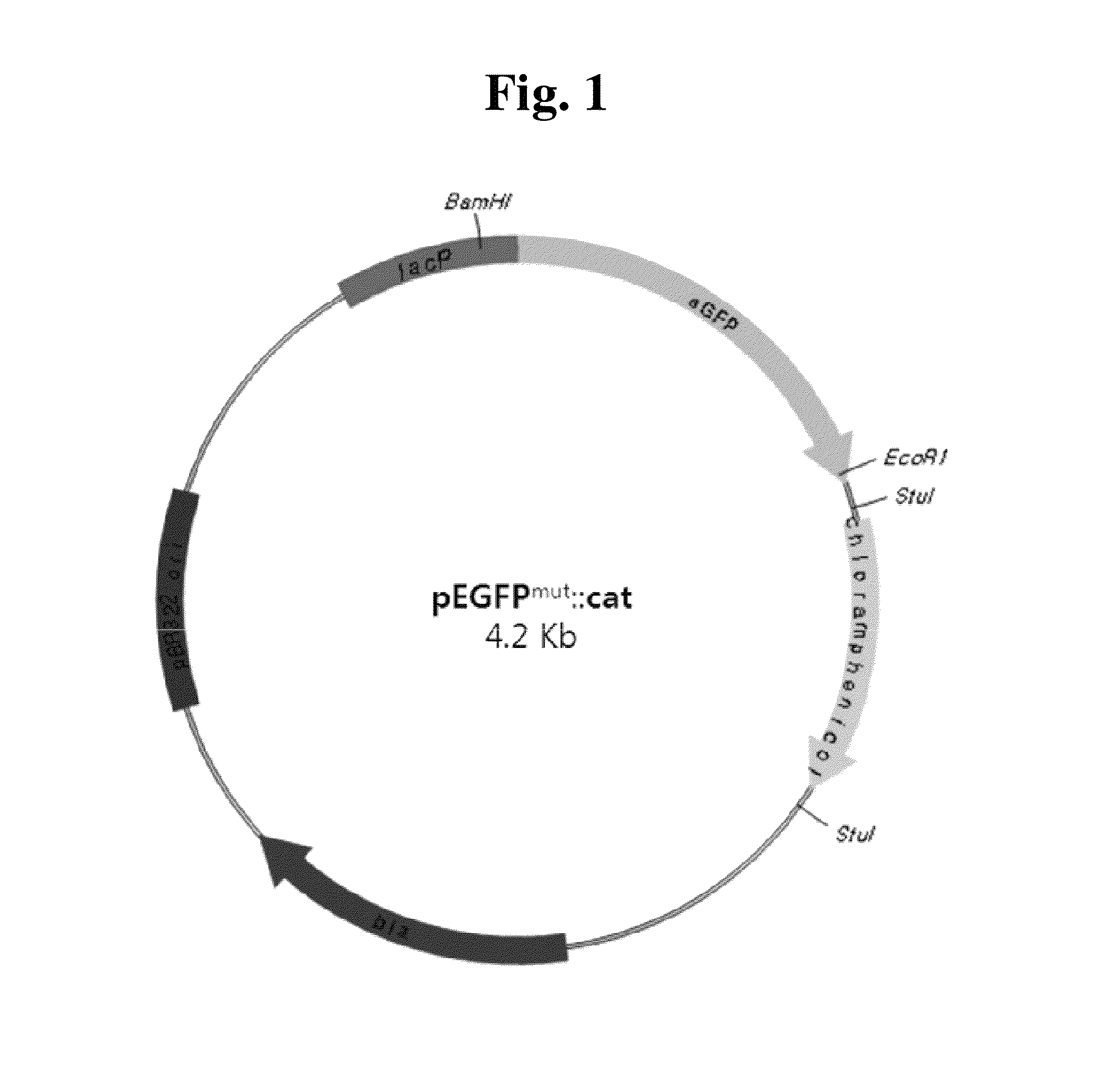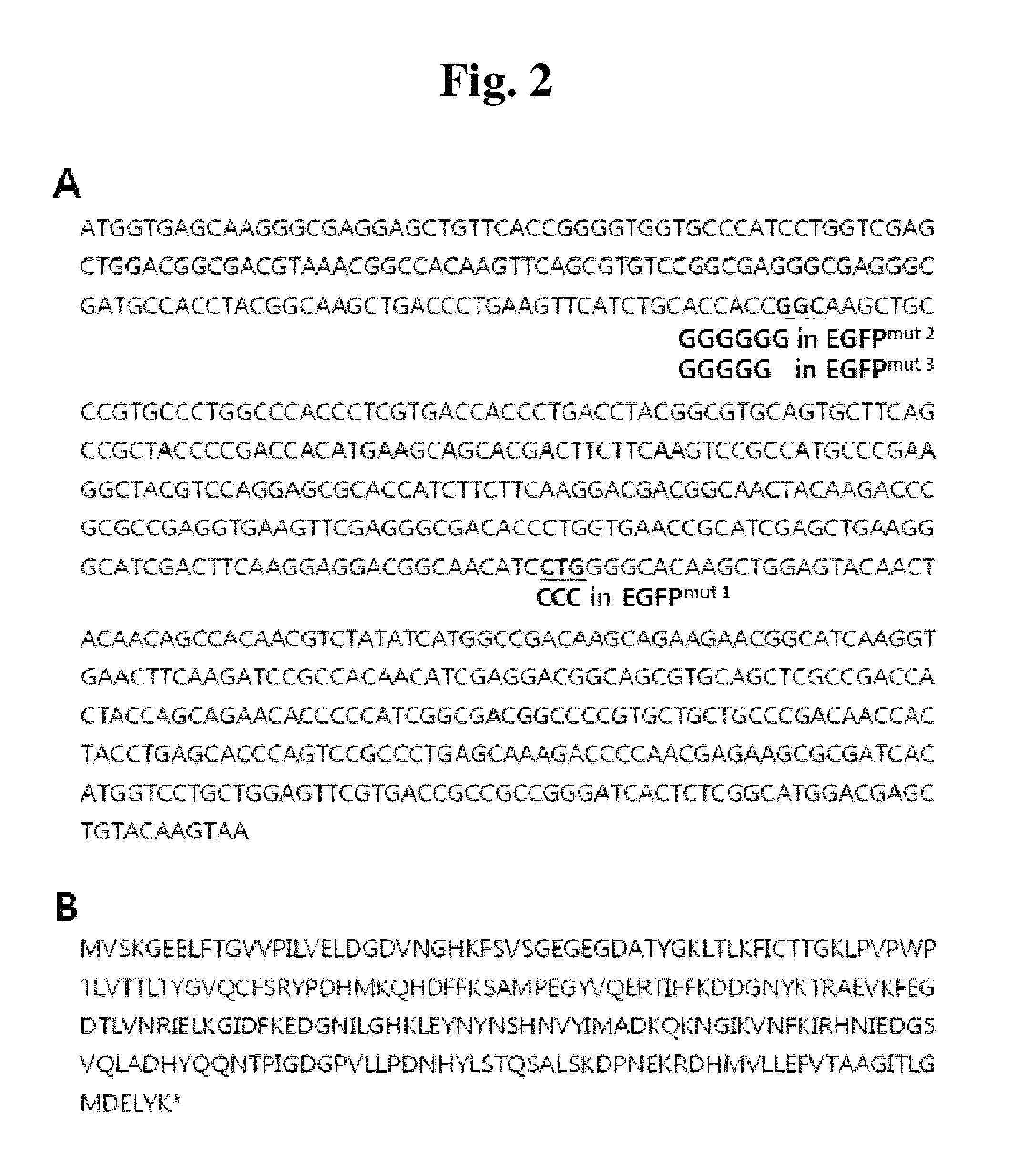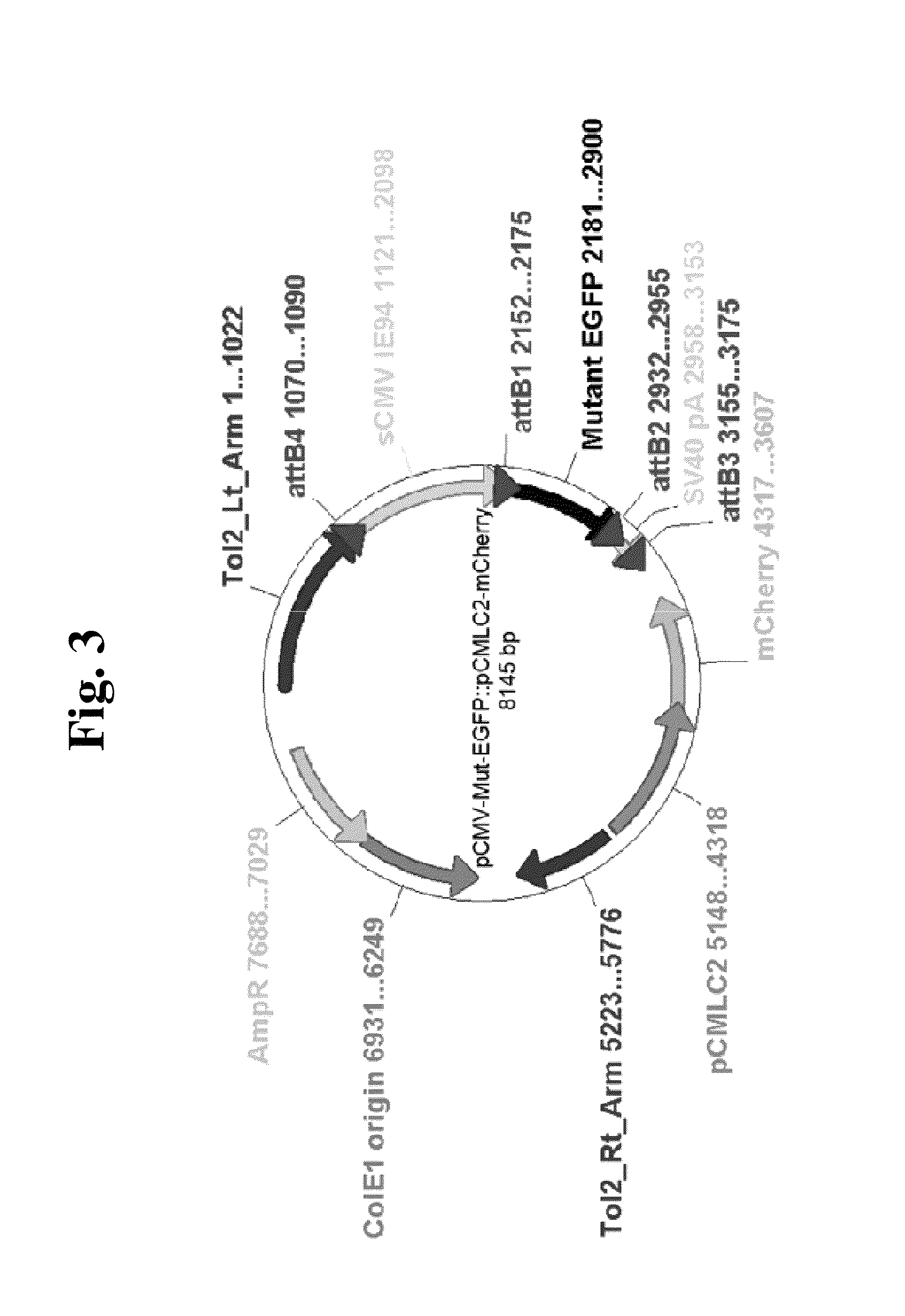Method for determining genotoxicity using non-fluorescent proteins
a non-fluorescent protein and genotoxicity technology, applied in the field of genotoxicity determination using non-fluorescent fluorescence proteins, can solve the problems of i>salmonella /i>not possessing the critical disadvantage of ames assay, serious risk to environmental and human health, etc., and achieve the effect of enriching green fluorescent proteins
- Summary
- Abstract
- Description
- Claims
- Application Information
AI Technical Summary
Benefits of technology
Problems solved by technology
Method used
Image
Examples
examples
Materials and Methods
Salmonella Strains
[0062]S. typhimurium strain of Ames test, TA98 and TA, were purchased and grown following manufacture's instruction (Xenometrix AG, Switzerland). CH4001 and CH4003 strains carrying EGFPmut DNA on their chromosomes (Table 1) were created as described in Result section.
[0063]
TABLE 1Stains and plasmids used in this invention.DescriptionReferenceStrainsLT2Wild type Salmonella typimuriumTA100Ames test strainBarnes et al., (1982)TA98Ames test strainIsono & Yourno (1974)CH4001TA100 carrying EGFPmut1 onthis inventionchromosomeCH4003TA98 carrying EGFPmut3 onthis inventionchromosomePlasmidspEGFPClontech LaboratoriesYang, Cheng et al.,pEGFP::CATcarries CAT at stuI site of pEGFP(1996)pEGFPmut1::CATcarries leu137 (CTC) to pro (CCC)this inventionchangethis inventionpEGFPmut2::CATcarries GGG next to gly51 (GGG)this inventionpEGFPmut3::CATcarries GG next to gly51(GGG)this inventionpCMV-Mut-carries relevant EGFPmut in Tol2kitthis inventionEGFP::pCMLC2-mCherry
Co...
PUM
| Property | Measurement | Unit |
|---|---|---|
| volume | aaaaa | aaaaa |
| volume | aaaaa | aaaaa |
| pH | aaaaa | aaaaa |
Abstract
Description
Claims
Application Information
 Login to View More
Login to View More - R&D
- Intellectual Property
- Life Sciences
- Materials
- Tech Scout
- Unparalleled Data Quality
- Higher Quality Content
- 60% Fewer Hallucinations
Browse by: Latest US Patents, China's latest patents, Technical Efficacy Thesaurus, Application Domain, Technology Topic, Popular Technical Reports.
© 2025 PatSnap. All rights reserved.Legal|Privacy policy|Modern Slavery Act Transparency Statement|Sitemap|About US| Contact US: help@patsnap.com



